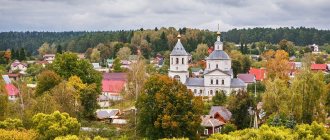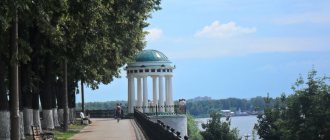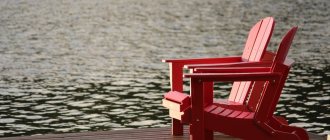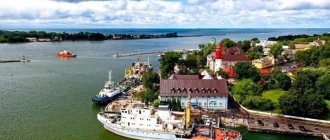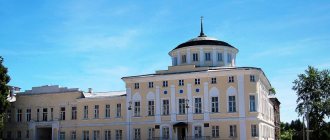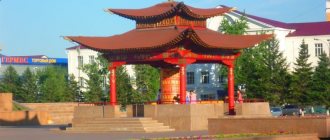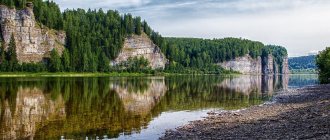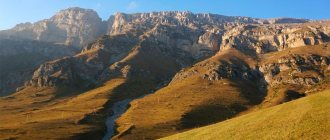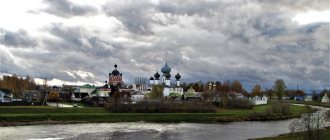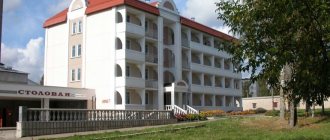Volokolamsk is a small city northwest of Moscow. Mentioned in the Laurentian Chronicle under the name Volok na Lama in 1135, it became an important point on the trade route from Novgorod to the lands of Moscow and Ryazan.
Being the most ancient city in the Moscow region, Volokolamsk often experienced a change of rulers: the Novgorod, Moscow, Vladimir, and Smolensk princes ruled it until the Lithuanian invasion, which, by the way, was successfully repelled by Volokolamsk.
Sadly, the city was also subject to destruction: in the 13th century it was captured by Khan Batu and Khan Duden; Volokolamsk suffered greatly during the Second World War, repelling the enemy’s attack on Moscow.
Today Volokolamsk is famous for its clean air, beautiful nature along the banks of the Gorodna River, a tributary of the Lama, and the ethno-festivals taking place there.
On the way to Volokolamsk from Moscow you will pass the Arkhangelskoye estate, the Vadim Zadorozhny Museum of Technology, the New Jerusalem Monastery and other interesting sights - look at them on the map of important places in the Moscow region.
Museum of Panfilov Heroes
In the vicinity of Volokolamsk there is the village of Dubosekovo. The small settlement became famous because on November 16, 1941, near it there was a famous battle between the Nazi tank division and the 316th Infantry Division of the Red Army, when 28 Panfilov heroes died. In 1975, a memorial complex was erected here.
On November 18, 1941, 11 sappers of the same Panfilov division, commanded by political instructor Pavlov and platoon commander Firstov, held the defensive line for two days. They destroyed 7 enemy tanks, all sappers were killed. In 1981, in memory of this event, the “Explosion” monument was opened, depicting the moment of the explosion of a German self-propelled gun near a trench of the Soviet defense line.
In memory of the battle, a museum of Panfilov’s heroes was opened in the village of Nelidovo, and the dead soldiers were buried in a mass grave outside the village outskirts. The museum premises are small, despite this there are quite a lot of exhibits here. In the first hall there are portraits of the participants in the battle; they were awarded the title of Heroes of the Soviet Union. Of particular interest to visitors are letters from soldiers from the front and their personal belongings. In the large hall there is a panoramic picture of a historical battle hanging on the wall. Here you can also see real anti-tank mines, shells, grenades, and rusty sapper shovels.
House-Museum of A.P. Gaidar
At the end of the last century, the house-museum of the writer Gaidar was opened in the city. This historical monument contains his photographs, books, things and household items associated with his creative nature.
The museum exposition introduces tourists to his work, written in this city; there is a video screening of famous literary works, such as: “Chuk and Gek”, “The Tale of the Kibalchish Boy”, “Timur and His Team”, etc.
For children, events are offered related to the writer’s favorite childhood holidays, gatherings and trips to Gaidar’s country, and you can also celebrate the New Year there with Chuk and Gek.
The museum hosts various outdoor activities. Theater programs, games, songs and round dances.
Address: Gaidar street-17.
Volokolamsk Historical and Archaeological Museum
Address: st. Gorval, 1 Phone: 8 (49636) 23-35-2, 8 (49636) 2-33-52 Website: https://www.volok-museum.ru/ Opening hours: from 9.00-17.00, weekends: Monday, last Friday of every month. Cost: adult ticket - 100 rubles, children's and discounted tickets - 50 rubles.
The first exhibition of the museum tells about settlements in the region in the 4th millennium BC. An inspection makes it clear that the prerequisite for the emergence of this ancient city of the Moscow land was the advance of the Novgorod Slovenian, Vyatichi and Krivichi tribes here.
The excursion reveals in detail the role of the city's portage routes in the development of trade relations between the Moscow Principality and the Middle East, Western Europe, Byzantium and the Caucasus.
The central exhibitions of the museum tell about the ancient Russian principality, which existed until 1513, in their collections:
- Weaponry of the 12th – 16th centuries (for example, a princely ax with chasing and a four-leaf mark)
- Items of pagan cults: amulets, bear fang pendant, wind instruments
- Leather shoes of the 12th – 13th centuries: pistons, boots, shoes
- Hoard of silver coins, about 200 units, 16th century
Where else to go
To the interactive bunker museum
Where the 10-meter figures of Panfilov’s men stand, a bunker museum has recently opened. Photo: Vladimir VELENGURIN
Address: Nelidovo village, st. Krestyanskaya, 18
Phone: 8-496-36-69-113
At the Dubosekovo station, where the famous 10-meter figures of Panfilov’s men crash into the sky near Moscow, a bunker museum recently opened. This is what children need: inside you can not only get acquainted with weapons from the war, but also take part in the battles yourself: the museum is interactive! And nearby, in the village of Nelidovo (a 2 km walk from the monuments), there is a museum of Panfilov’s men - with their photos, letters and very sincere guides.
| Interactive Museum | 200 rub. |
| Panfilov Museum in Nelidovo | 100 rub. |
To the Goncharovs' estate and to the country's first rural hydroelectric power station
The red brick estate is the former estate of Natalia Goncharova, Alexander Pushkin’s mother-in-law. Photo: globallookpress.com
Address: Yaropolets village, st. Dodogorskogo, 4
Opening hours: 10:00-17:00 (Tue-Sun)
Phone: 8-496-36 6 - 3 1 - 56
Yaropolets is a village 20 minutes drive from Volokolamsk, one of the oldest in the Moscow region (known since the 12th century). In the century before last, there was the estate of Natalya Goncharova, the mother-in-law of our Alexander Pushkin, so the poet and his wife came to these parts more than once. By the way, in early June, in honor of Pushkin’s birthday, they promise to open his room for tourists.
The local history museum will tell you about the estate and its owners. However, as well as about more modern history - the construction in these places in 1918 of the country's first (!) village hydroelectric power station. And you can go to the hydroelectric station itself.
| Museum ticket | 100 rub. |
| Tour of the Goncharov estate | 1500 rub. from a group of up to 20 people |
To the Joseph-Volotsky Monastery
In the village of Teryaevo near Volokolamsk there is the Joseph-Volotsky Monastery, founded in the 15th century. Photo: globallookpress.com
Address: Teryaevo village
Opening hours: 9:00-20:00
Founded in the 15th century, the monastery was famous for its strict lifestyle and tall bell tower - 75 meters. From it you could see Moscow itself - so in 1941, in order not to give such an observation post to the Germans, the bell tower was blown up. But even now, without the bell tower, the monastery is a place of pilgrimage for both believers and lovers of history and beauty.
We go by train from Rizhsky station to Chismena station, then by bus No. 23 to the Teryaevo stop.
Visit the rarest animals
There is a Center for the Reproduction of Rare Species of Animals in the village of Sychevo. Photo: globallookpress.com
Address: Sychevo village, industrial zone No. 3. There is a bus from the Volokolamsk railway station to Sychev. Then you need to take a taxi or walk 3 km
Opening hours: 11:00-16:00 (every day except Monday)
This year, the Center for the Reproduction of Rare Species of Animals, the Sychevsky Zoo Nursery, opened to everyone. Since 1994, more than 1,000 representatives of rare species of animals live and breed here. From here, baby cheetahs, Siberian tigers, Japanese cranes and blue magpies are sent to zoos around the world.
| Adult ticket | 400 rub. |
| Ticket for children under 6 years old | For free |
Learn to ride
At the Gloria mini-zoo you can go horseback riding around the surrounding area. Photo: globallookpress.com
Address: Bykovo village (turn before Volokolamsk)
Phone: 8-905-760-97-28
If you want to communicate more closely with animals, go to the Gloria mini-zoo. If you don't know how to ride a horse, they will teach you. Do you know how? Better! In the company of riders like you, you will go on a horseback riding trip. And not just a hike, but with a purpose. For example, groups are taken to Pushkin, in the neighboring village of Yaropolets. Or to the Joseph-Volotsky Monastery. There is a “weekend program” - the price includes horseback riding, meeting domestic goats and rabbits and, most importantly, playing with wonderful dogs. For example, the greyhound Darina, who was rescued from euthanasia, loves to hug. And the shaggy Bernese Mountain Dog named Anna touchingly sits down on her hind legs and almost plays pats with her hostess - to the delight of the guests!
| Horseback riding | 500 rub. in an hour |
| Horseback riding | 1500 rub. |
| "Weekend program" | 1500 rub. |
| Overnight | 500 rub. per person |
Before your trip, you need to call the owner Anna Chepeleva in advance and make an appointment by calling 8-905-760-97-28.
By the way, here you can not only go for a ride, but also barbecue and spend the night.
How to get to Volokolamsk
You can get to Volokolamsk in the following ways:
- by train - from Rizhsky station, travel time - 2.5 hours. From stations in the Kursk direction: Podolsk, Shcherbinka, Tsaritsyno and Moscow - Kurskaya.
- by bus - from the Tushino metro station, the bus station is located at the address: Stratonavtov proezd, 9. Travel time: from 1 hour 40 minutes. up to 2 hours 20 minutes
- by car - along Volokolamsk or Novorizhskoe highway. Travel time from the Moscow Ring Road (without traffic jams) is 1 hour 20 minutes.
Where to go with children in Shchelkovo
Shchelkovo will offer a wonderful cultural and educational program for the young traveler. There are several wonderful places in the town and its surroundings where children will have a lot of fun.
Cosmonaut Training Museum
Both the child and his parents should visit this amazing place. The collection of the museum, created at the Cosmonaut Training Center in the world-famous Star City, consists of rare exhibits and real relics. A separate exhibition hall is dedicated to the first earthling to be in low-Earth orbit. Personal belongings, archival and photographic documents telling about the life path of Yuri Gagarin are displayed here. Visitors will be able to see the simulators on which interstellar space researchers prepare for their missions, and listen to an interesting lecture on the history of space exploration. Museum guests are also invited to visit the Planetarium and Hydrological Laboratory.
Shchelkovsky Park of Culture and Leisure
The city park occupies an extensive recreation area stretching along the picturesque bank of the Klyazma River. Here you can have a wonderful time with the whole family. Teenagers enjoy riding bicycles, scooters, and rollerblades along the shady alleys. For children there is a special playground with trampolines, inflatable towns, and carousels. Experienced animators work with young visitors. Teenagers will certainly be interested in attractions of varying degrees of extremeness. Guests of the city are always welcome to visit the cafe, where delicious desserts are offered to those with a sweet tooth, big and small.
Museum of Military Uniforms
The fact that this wonderful museum is located on the territory of an active military unit is very symbolic
The quartermaster service has always been an important component of the Russian army. Not a single boy will refuse to view the unique exposition of the institution.
From the exhibits on display here, it is easy to trace in retrospect how military fashion has evolved - from the uniforms of Peter the Great's grenadiers to the equipment of modern special forces.
You can come to the colorful town on purpose or combine its visit with a tour to Moscow. There is certainly something to see here. The sights of Shchelkovo will not disappoint even the most experienced traveler.
Pyramid of Hunger
Moving along the Novorizhskoye Highway, every tourist heading to Dedovsk can see an unusual structure - a pyramid. This structure is called the Pyramid of Hunger, and the famous architect Alexander Golod was involved in the development of its design back in Soviet times. The pyramid belongs to the energy type.
In Soviet times, about 20 similar pyramids were built throughout the country, which had different heights; the pyramid located near Dedovsk is 44 meters high. According to information received from the author, the pyramid is based on the golden ratio, so its sides have a ratio of 1:1.62.
The construction of the pyramid took place in 1999. The Pyramid of Hunger is located 11 kilometers from the center of Dedovsk.
Location: Chesnokovo village, Novorizhskoe highway, 38th km.
A few facts about Volokolamsk
- The first mention of Volokolamsk in the Suzdal Chronicle dates back to 1135 .
- Until the XVIII century. was called Volok Lamsky (Volok-on-Lame) due to the fact that along the Lama River flowing in these places people dragged “ships to the upper part of the Volga.”
- Occupied area – 30 sq. km with a population of about 20 thousand people.
- Located on the Baltic federal highway, the distance to Moscow is 98 km.
- The sister city of Volokolamsk is Mozhaisk near Moscow.
Monument "Explosion"
In honor of the feat of 11 sappers in the Second World War, a monument was erected at the 116th kilometer of the Volokolamsk highway, at the 116th kilometer.
Sculptor A. A. Veselovsky erected an architectural composition, which includes: a granite stand with engraved dates and memorial plaques, a sculptural image of the explosion that lifted the tank, due to which its right side buried itself in the ground, and the tracks came off on the left side of the tank .
Interestingly, for authenticity, the sculpture of the tank was made from a real enemy vehicle, recovered from the bottom of the swamp. In 2011, the monument was restored, as over the years of its existence it had become significantly dilapidated.
Location: Volokolamsk highway (114th km).
Estates of the Goncharovs and Chernyshevs in Yaropolets
Goncharovs' estate
The sights of Volokolamsk are unthinkable without two famous noble estates. Of particular interest is the estate, which at one time was owned by the Goncharovs - the parents of Natalya, the wife of the poet A.S. Pushkin. In addition to them, at different times this estate was owned by the families of one of the Little Russian hetmans Doroshenko, as well as the eminent noble family of the Zagryazhskys.
Chernyshev Estate
Not far from the estate is the recently restored Doroshenko tomb. Famous people, including royalty (Catherine II), often came to visit the house located here; Pushkin himself visited twice, even V.I. Lenin visited it.
The Goncharov estate was restored, and the room in which the famous Russian poet stayed during his visits was completely restored from photographs taken in 1937.
Chernyshev Estate
The Chernyshev estate was once called the “Russian Versailles” for its beauty and elegance. True, now little has been preserved of its former beauty. But nearby there are two churches - Catherine and Kazan.
Temples, churches and monasteries of Volokolamsk
In Volokolamsk itself and its surroundings there are many religious attractions that you can even see on your own. Below are the most famous of them.
Joseph-Volotsky Monastery
Address – s. Teryaevo.
The historical and cultural monument is located 28 km from Volokolamsk, in the village of Teryaevo, Volokolamsk district. In the middle of the 15th century, in the Borovsky monastery, located in the Kaluga region, there was a change of abbot - the Monk Joseph became him. He had big plans to rebuild the monastery, but the brethren did not support him, and he returned to the Volokolamsk region, founding the Joseph-Volotsky Monastery here.
Many tragic and majestic events took place within the walls of this monastery. In Soviet times, its buildings were first transferred to a museum and then turned into an orphanage. But in the 90s. They decided to revive the monastery - it functions to this day. A visit to the men's monastery is a must - to learn more about the history of your homeland, attend services and simply enjoy the natural beauty of the surrounding area.
Church of John the Baptist
Address – s. Yaropolets.
The roots of the village of Yaropolets go back to the 15th century, at that time it was the property of the Joseph-Volotsky Monastery. Since the 16th century, it passed into the possession of many princes. First I visited Ivan the Terrible, and then the Goncharovs. In 1750, construction of the palace complex began. The first thing that was erected here was the Church of John the Baptist.
Church of the Baptist (Resurrection of the Word) in Ramenye
Address – s. Ramenier.
Already in the 15th century there was a village on this site. During the Time of Troubles it was devastated by the Lithuanian invasion. In 1637, the lands were bought by Kolychev and began to be actively revived. At that time, a wooden church was built, which was rebuilt several times. Only at the end of the 19th century it was rebuilt from stone.
Church of the Kazan Icon of the Mother of God
Address – s. Yaropolets.
The location of the church is the Chernyshev estate. Initially it was wooden, but in the 1870s. decided to build a stone one. Construction lasted about 60 years. The temple was built according to the design of the famous architect Kazakov.
The temple complex includes two churches, which are connected by a refectory. The chosen architectural style is classicism and pseudo-Russian style. In appearance it resembles a castle with beautiful towers and domes.
Under the USSR, the temple was closed and services were prohibited from being held there, but despite all the prohibitions, all sacraments were carried out as usual. The beautiful decorations have retained their image to this day, which is why they are considered not only religious objects, but also architectural ones.
Church of Peter and Paul
Address: Sovetskaya, 28.
In the 17th century, on the site of this church there was the Vasilyevsky Monastery. At that time, the mother of the Monk Joseph lived there. After her death in 1696, it was decided to build a church directly above her grave.
In the 19th century it was reconstructed and a refectory and bell tower were added to it. A little later, the first one was dismantled and a warm spinning mill was built there. During Soviet times, the bell tower and dome were demolished, and the church itself was turned into a factory for the production of bakery products.
Church of the Intercession of the Blessed Virgin Mary
Address - st. Dovatora, 9.
In the past, the main cathedral of the Varvara Monastery was the Church of the Intercession of the Blessed Virgin Mary, built in 1695. In 1764, it became an independent Orthodox object - when the monastery was abolished. In the 19th century, the temple was completely rebuilt.
At the end of the 70s. In the 19th century, a bell tower was installed here. Before the revolution, there were icons here that are now kept in the Sergiev Posad Museum. The most revered icon is the Mother of God “It Is Worthy to Eat.” On the basis of the temple there is a church shop, a library and a Sunday school.
Church of the Nativity of the Blessed Virgin Mary
Address - st. Resentment, 14.
The temple was erected in 1537 and was an integral part of the Vozmischensky Monastery. Later, in the middle of the 19th century, a bell tower and a refectory were erected here. People call this church the Church of Resurrection. Now there is a parish here. A distinctive feature of the building is its bulkiness, archaism and heavy architectural forms.
Church of the Nativity
Address: Revolyutsionnaya st., 7.
Where a burnt wooden church had previously been located, a temple was erected in 1778. The construction was sponsored by a Volokolamsk tradesman and a Moscow merchant. In the 19th century, the church was modernized, making classicism its main architectural form. Like many other buildings, it was looted during Soviet times and turned into an administrative building.
Volokolamsk Kremlin
This historical monument allows modern people to get closer to the origins of the city. Even today you can see fragments of the protective structures of Volokolamsk, discovered thanks to the efforts of archaeologists. These include: an earthen embankment with a wooden palisade (fragments of the very first city fortifications); a southern defensive ditch dug in the first half of the 1300s; remains of a 16th-century stone fortress.
All other buildings of the Kremlin belong to places of worship, being objects of cultural heritage. And although they are geographically located inside the Volokolamsk Kremlin, representing a single complex with it, in fact, these are separate attractions of Volokolamsk.
Resurrection Cathedral
This is the oldest religious building on the territory of the Volokolamsk Kremlin. The approximate time of construction is the end of the 15th century. There is a certain severity in its appearance, which is explained by the additional duties assigned to the temple - to also perform a defensive function.
The cathedral is a four-pillar, white-stone, single-dome structure, which has a minimum of decorative details on the outer walls, but many small windows, actually embrasures for shooters.
Among the surviving wall decor, the symbols of Perun and Krin, which are pagan signs of fertility, are clearly visible. This fact shows that the spread of Christianity in Rus' did not occur overnight, and its final victory occurred several centuries later.
Five-tier bell tower
A beautiful five-tiered structure appeared on the territory of the Kremlin in the 19th century thanks to the efforts of the architect N.P. Markova. It was he who presented the original project, which was embodied in stone in 1880.
Now tourists are attracted here not only by the beauty of the structure, but also by the opportunity to climb to its upper tier to admire Volokolamsk from above. Almost simultaneously with the bell tower, a brick fence was erected next to it, which had original decorative elements and was reinforced with towers at the corners. Until recently, it also had gate towers, but during restoration work they were dismantled.
St. Nicholas Cathedral
This temple is a building erected in the pseudo-Russian style. For its manufacture, red brick was used with contrasting decorative white trim. This cathedral was built in honor of Russian soldiers who laid down their lives on the battlefields of the Crimean War. Now the temple serves a dual function: an architectural monument and a city historical and architectural museum institution.
To display the exhibitions, 2 floors of the cathedral are used, where you can see the finds of paleontologists, as well as a large number of historical exhibits found during the excavations. There is also a model of a settlement that was once located on the site of present-day Volokolamsk. There is also an art gallery.
Interesting architectural monuments
You can also trace the history of the city by visiting various architectural sights, which are often included in excursions around Volokolamsk.
Train Station
Address - st. Tereshkova.
In the southern part of the city there is a railway station. Regular trains run through it in the Moscow and Riga directions. The opening of this railway took place in the 19th century, when the Moscow-Riga railway line was laid. The building that visitors can see today has been reconstructed and modified several times.
Central square and bank
Address - pl. Oktyabrskaya.
In the center of the city, at the source of the hill on which the Volokolamsk Kremlin is located, there is a bank building. It was built in the 19th century. Classicism was chosen as the main architectural style for it. Now the building is one of the symbols of the city. The project was drawn up in an unusual form, which gives the city the status of uniqueness.
Estate N.I. Goncharova
Address: Yaropolets village.
There were several buildings on the territory of this attraction. It did not differ in any significant way from other estates near Moscow. It is interesting and informative that in ancient times there was a kennel here where the dogs of the Moscow kings were kept. The chronicles even mention that Alexei Mikhailovich loved to hunt here.
In past centuries, Pushkin’s mother-in-law, Goncharova, lived in the estate. Before the war there was even a Pushkin room there. But during the fighting, the estate was badly damaged. The poet's room burned down, and other buildings were also damaged. Already in the post-war years, the estate was restored. Today there is a recreation center there.
Yaropoletskaya HPP
Address – s. Yaropolets.
In 1918, the Volokolamsk Drama Club staged a play for residents of the village of Yaropolets. One of its conditions was the presence of a hydroelectric power station. A local agronomist proposed to build it at the Chernyshevs’ water mill. The idea was successfully implemented and the performance took place under electric lighting.
Subsequently, 14 more villages were connected to the local station. But, like many ancient objects, the station was blown up by the Nazis during the war. After 15 years, it was restored by local residents. Today it is not functioning, but it is of great importance as a historical value.
Museum of German Anti-Fascists
According to historical data, in May 1942, camp No. 27 for prisoners of war was built in the city of Krasnogorsk. More than 50 thousand German prisoners of war passed through it. The status of this premises was quite high, to such an extent that its head was appointed by the People's Commissar of Internal Affairs himself. This camp existed until 1950.
In 1985, the leadership of the GDR proposed to create a Memorial Museum of German Anti-Fascists in its place, which was brought to life.
Location: street.
In the vicinity of the city of Dedovsk there are many more attractions, natural and historical monuments, beautiful architectural buildings and much more. It’s better to see everything with your own eyes once than to read about it thousands of times. And the presence of a large number of hostels and hotel complexes will give tourists the opportunity to comfortably stay in the city.
Sights of Volokolamsk for children
Volokolamsk is a small, provincial town that attracts tourists primarily for its environmental cleanliness. Therefore, there is not much entertainment here for travelers with children.
- The best place to go with children in Volokolamsk is its Kremlin .
- In addition to the Kremlin, tourists with children are offered to visit the city park complex or public garden near school-gymnasium No. 1.
- There are also several children's cafes , such as 33 Penguins or Baskin Robbins.
Perhaps our readers can add to the list of interesting places for children in the city of Volokolamsk? Be sure to write your ideas in the comments!
Architectural structures in Volokolamsk
Volokolamsk has had its share of many trials, the sights of the city are those that were miraculously preserved during the years of disbelief and devastation, that survived the brutal fascist bombings. In a city closely built up with gray, boring Khrushchev buildings, unique ancient buildings are especially touching and admiring.
The main attraction and architectural dominant of Volokolamsk is the Volokolamsk Kremlin. The remarkable architectural ensemble of the Kremlin consists of:
Resurrection Cathedral
The temple was built in the style of early Moscow architecture of the 15th century.
The white-stone, four-pillar, single-domed temple on a high square basement, austere and majestic, is the best monument of Russian temple architecture of the Moscow region of the 15th century.
St. Nicholas Cathedral
The monument-museum St. Nicholas Cathedral is dedicated to those who died in the Crimean War. The cathedral is made cruciform in plan; a light drum is installed on the dome in the middle part of the cross. The basis of the cathedral is a quadrangle with two rows of windows decorated with carved frames. The cathedral is decorated with white stone details.
In the Kremlin, the high, 5-tiered bell tower, like an arrow rushing into the blue sky, evokes admiration. It was erected in 1888 and connected by a passage with the Resurrection Cathedral. From the height of the bell tower there is a wonderful view of the city and its surroundings. Those who wish can climb it and enjoy the incredible beauty and spaciousness that opens up to their eyes.
The carved fence surrounding the Kremlin, with decorative towers at the corners, is a real work of art by Russian foundry craftsmen of the 19th century. In addition to the Kremlin architectural ensemble, there are many more remarkable architectural structures in the vicinity:
Joseph-Volokolamsk Monastery
Joseph-Volotsky Assumption Monastery was founded in the lake and swampy region in 1479 by the monk, former abbot of the Borovsky monastery, the Monk Joseph of Volotsky with the permission and with the help of Tsar Boris. The monastery was built 30 km northeast of Volokolamsk, near the village of Teryaevo. In 1488, the first stone was laid for the construction of the Assumption Church, the cathedral church of the monastery.
Centric compositions were used in the construction, and the interior decoration was made in the Baroque style. The five-domed, four-pillar Assumption Cathedral is famous for its unique carved iconostasis, remarkable twisted columns, and is surrounded on three sides of the temple by two-tiered vaulted galleries.
The Assumption Cathedral houses the relics of St. Joseph. There is a legend that worshiping the relics of a saint helps one gain wealth. The fortress walls of the monastery were erected in 1543-1566. They were supposed to defend the Moscow principality from the West. The fortress was captured by the Poles during the Time of Troubles, but was again liberated and restored by the monks.
Church of John the Baptist
In 1755, in the village of Erapolche (today Yaropolets), which belongs to the Joseph-Volotsky Monastery, with the construction of the brick Church of John the Baptist, the construction of the rich estate of Prince Goncharov began.
The temple was built according to the design of the famous Russian architect A.A. Zaryazhsky. The church was completely rebuilt in the classicist style in 1808. Instead of the traditional dome, they decided to install a gilded ball with a cross. Regular services are still held in the small church today.
Church of the Kazan Icon of the Mother of God
The Kazan Church was erected in 1780 by Count Z. Chernyshev in the village of Yaropolets (formerly Eropolcha). The construction was led by the famous Russian architect M.F. Kazakov. The architecture of the temple intricately mixed external antique classicism and pseudo-Russian style of interior decoration.
The patrimonial temple is designed in the form of two symmetrical parts, connected by a transverse through passage. Later, a refectory was organized in the passage. This was an innovation in the traditions of Russian temple construction. In the left half of the temple, in the southwestern asp, there is a pyramid-shaped tombstone of Z. Chernyshev.
The palace and park complex combines the count's house with a church and a huge descending three terraces to a large pond and a linden park. Due to the extraordinary luxury and pomp of the estate, contemporaries called it “Russian Versailles”. Today the estate is dilapidated and in great disrepair.
Alley of Love
This miracle is located on one of the shores of School Lake. In 2009, a hand-forged Love Tree was erected on the alley. According to the newly introduced traditions, immediately after painting, the newlyweds hang locks with their names on it, and the keys from them are thrown away not just anywhere, but directly into School Lake.
This is a symbol not only of the strong family relationships of the young spouses, but also a testament to their strong mutual love and strong friendship. There are a large number of benches and gazebos, and there is even a special sports ground and stage. On weekends and holidays, all kinds of concerts are held on the Alley of Love.
Moscow Raceway
What Russian doesn't like driving fast? Remembering this rhetorical question from the work of Nikolai Vasilyevich Gogol, you can visit the sports and entertainment center in the village of Sheludkovo . Car and motorcycle races are regularly held here, as well as track days, when even a beginner can try his hand at the race track.
Photo: https://ru.wikipedia.org
